Chilling out for a Day....
As mentioned in the previous chapter, we had agreed to swap our final day tour from Tuesday to Wednesday, to accommodate sharing with another single traveller. Neither of us were very well still and it suited us to use the Tuesday as a rest day, rather than the Wednesday we had planned. We would also be treated to a much longer tour around Streymoy and Eysturoy Islands than we had originally booked, at no additional cost. A real mystery tour....
We were also happy that we could use our "spare day" to chill out, and also to catch up on some of the more mundane aspects of travel - washing, a little grocery shopping and most importantly for me, trying to find some assistance with my iPhone which was not going automatically into screen saver when not used. As a result, and if I forgot to manually turn the screen saver off, the phone was using a lot of unnecessary power; a real problem in cold conditions where battery power literally disappears as you watch it. Thankfully, I had a portable power pack with me but I had on two occasions, totally run out of battery power and had to use my trusty old Panasonic camera instead.
As everyone knows, when travelling in any foreign country, identifying the location of a certain photo shot can be very frustrating - especially after a few months following our return home. It was especially difficult in the Faroe Islands as the islands were mostly connected by tunnel, making it difficult to orient ourselves, let alone remember or even pronounce some the tricky Faroese location names, especially those with often unrecognisable vowels and consonants.
And that is the joy of having a phone camera that provides navigational co-ordinates, and even locational maps. I must say, it was pure murder lining up two lots of camera photos and identifying the names and locations when I came home....
A Shopping Mall Visit to SMS Tórshavn
On our Tuesday "day of rest" we visited a nearby shopping centre, about a fifteen-minute easy walk from the Brandan Hotel. It was close and convenient, and included an impressive variety of shops from designer clothing stores, upmarket children's shops, sports outlets, chemist shops, a large supermarket - and most importantly for me, a computer store which also dealt with mobile phones. Quite frankly, we were somewhat astonished by the modernity of the Faroes. Perhaps we had grown too familiar with the often primitive settlements of wild and remote Arctic Russia, so I am not sure exactly what we were expecting. But it was certainly miles more sophisticated than we had ever imagined for such a far flung, remote archipelago.
The staff member in the computer shop was extremely helpful but after much investigation of the private bits of my iPhone, he could not fix the problem. I would just have to remember to manually turn the screen saver on after each use; something a lot easier said than done.... I must say that he was extraordinarily helpful and generous with his time. And I was both surprised and embarrassed that he refused to accept any payment for his services - which took well over an hour.
As usual, we had fun wandering through the supermarket. The quality of the produce was exceptional with all of the fruit and vegetables being imported from all parts of the world - avocadoes from Israel and grapes from Peru, and even bread from Sicily. And of course, there was plenty of locally sourced fresh and dried fish, and lamb.
The store just lacked one staple item - alcohol. And interestingly, when we asked the staff at the checkout where we could buy some beer, they were more than a bit hesitant, pointing vaguely in some direction toward Tórshavn Harbour! And even though Simon had forewarned us about the lack of enthusiasm for alcohol sales in the Faroes, it did come as rather a shock.... So, we had no option other than to buy it from the hotel - at a considerable cost..... Which of course, we did....
That evening, we decided we had had enough of snack foods and booked a table at our hotel's upmarket Húsagarður Restaurant for our evening meal. We opted for the set three-course meal which was excellent: well-cooked and nicely presented. We were however, not fully recovered from our recent sickness and to our utmost disappointment, we could barely finish our main course. Reluctantly, I had to leave most of my dessert. A sad finale to a dinner that cost nearly USD300....
DAY 5 - AN UNEXPECTED LONG DAY TOUR OF STREYMOY AND EYSTUROY
A Love Affair with Saksun, Streymoy
If there was one image that sold me on visiting the Faroe Islands, it was drone footage of the exquisite old church at Saksun on the northern coast of Streymoy Island. Wonderfully located on the edge of a remote hillside village, the lonely turf-roofed church nestled in an enchanting natural rocky amphitheatre overlooking a tidal lagoon, was hauntingly beautiful - and simply irresistible. A visit to Saksun and also a visit to another apparently very beautiful village of Gjógv on Eysturoy Island was part of our original itinerary, but when the opportunity to make this day even longer by adding some additional destinations, we were delighted. And especially as we would be having Simon as our guide again.
En Route to Saksun: Hosvik, Við Áir and the Sundini Fjord
On a glorious sunny day, our first stop for the day was the Tórshavn Hotel where we picked up our other passenger. Nina, a historic sites lecturer from Copenhagen, was attending a conference in Tórshavn where she was delivering a research paper. Once again, we were very fortunate. Quiet and unobtrusive, Nina was very pleasant company.
Heading north in Streymoy Island, we travelled once again past Majørkadalur Prison, and the lookout to Koltur Island, followed by the hamlets of Hosvik, Við Áir to the coastal village of Hvalvik.
To the east was the island of Eysturoy, separated from Streymoy by the narrow Sundini Fjord. In the distance, steep suede mountains pocked with tiny caps of snow, rose majestically from the island's shores.
As we passed the former whaling hamlet of Við Áir, Simon explained about the sensitivity of whaling in the Faroes. Built by the Norwegians in 1905, it is the only one of the original seven whaling stations built in the Faroes whose buildings are still standing. Indeed, it is one of only three such whaling stations still standing in the world today (one being in Albany, Australia). Today, whaling is limited to 520 pilot whales (actually a dolphin) per year, mainly in July and August. It is apparently not commercially viable, but when you consider there are only 58,000 people living in the Faroe Islands, it is nevertheless a sizeable catch.
Since the late 20th century, animal rights, conservation and environmental groups have condemned the hunts as both cruel and unnecessary, especially as most Faroese people do not consume whale meat. The Faroese government however, is adamant that the killing method is humane (severing by knife of the spinal cord) and it is an integral part of Faroese tradition, and a valuable source of food for the islands' inhabitants.
For the first time we noticed cultivated fields ready for planting with the Faroes' only commercially viable crops of rhubarb and potatoes. Sealed bales of silage dotted the rolling hillsides. Sheep meandered aimlessly across the roads from field to field; with seemingly not a care in the world. We were, Simon explained driving through the only place in the entire Faroe Islands where you cannot see the ocean or a fjord. What a plug for Faroese real estate!
Hvalvik
Hvalvik village (literally translates to "whale bay"), with its sister village of Streymnes, is perched on the expansive estuary of the Stórá River, the Faroe's longest river which is also renowned for its excellent salmon fishing. Together the twin villages house around 400 people and because of their proximity to Tórshavn, have become a popular and rapidly growing location.
Hvalvik which is home to 260 people, is the site of the oldest of the traditional black wooden churches of the Faroe Islands. Built in 1829, it was a replacement for the original church dating back to the 1700's and which was later ruined during a savage storm. The church is built from wood brought in from Saksun from a destroyed boat which ran aground in 1828, The architecture is typically Faroese, with double wooden walls and a solid stone foundation. The pulpit dates back to 1609 where it was originally located in the Church of Tórshavn which was seized by French pirates during a raid in 1677. In fact, the slashes in the timber are said to be caused by the pirates' swords....
We stopped for a walk around the enchanting, black wooden, turf roofed Hvalvik Church; the colour reflecting the traditional construction of early churches that used coal tar as an effective preservative. Interestingly, the roof turf housed a mass of wild flowering low flat leaved vegetation. Peering through tiny windows, we could view the very simple Nordic design and some of the lovely murals that decorated the church interior. Old lichen covered stone walls enclosed the church grounds. At the rear, a rickety wooden gate led to a surprising thicket of deciduous trees, some of the first trees we had seen in the Faroes.
During our travels around the Faroe Islands, we often commented on the number of wooden cottages painted black. With their lovely white trim, they were certainly very attractive, and I expect they would represent the Faroese desire to retain the appearance of the older black tarred houses.
Saksun
Saksun village is undoubtedly a real icon of the Faroe Islands. It was truly stunning. My only slight - and that is VERY slight - disappointment was that it looked miles more hauntingly exotic from the highly sophisticated drone footage we had seen in the travel advertisements prior to our travels. It is not a complaint, merely an observation.
At this point, it is well to mention that the Faroes are marketed with extraordinarily professional photography, much of which is drone captured. Just before we began our trip, we watched some truly wonderful advertising videos of the Faroe Islands. To my surprise, Alan asked me if I had ever considered that the islands may look very different from a human-height, ground-level perspective, rather than the gorgeous aerial footage we had viewed. It was a good point. And certainly, for sites such as the hanging Lake Leitisvatn with its much-famed Bøsdalafossur waterfall where from the ground, it was not possible to appreciate the optical illusion of the lake appearing to "hang" over the ocean, nor could we see the wonderful waterfall cascading into the Atlantic Ocean. But then again, the Faroe Islands do have some extraordinarily panoramic views, many of which would be impossible to view in their entirety in any other way.
Located on the north-western tip of Streymoy Island, this extraordinarily remote village is thought to date back to the 1400's. Today, Saksun is home to just eleven permanent residents. Not surprisingly, it has become a well-known international tourist destination as well as a favourite summer day trip for many Faroese.
Saksun lies on the base of what used to be a mountain-contained inlet into the open seas of the Atlantic Ocean. The inlet, which resembles a natural amphitheatre, once formed a wonderful natural harbour until a wild storm in 1600 blocked the entrance with sand. The western end of Saksun village overlooks the Pollurin tidal lagoon, a tidal body of water virtually enclosed by sheer craggy cliffs. Today, the lagoon is only accessible by small boat at high tide.
Saksun is a jumble of turf roofed old farmhouses, the Dúvugarðar Museum and the simply breathtaking tiny white-washed, stone church sitting in total solitude high over the Pollurin lagoon entrance. The church is surrounded by an old cemetery with the church grounds supporting around 300 Faroes sheep for breeding. A true fairy tale village.
As Simon mentioned, we were very fortunate to be the only four people visiting the village that morning; not another tourist in sight. Nor even a local, for that matter. We were however, mindful that the residents of Saksun were particularly sensitive to tourists wandering over their private property. Which of course we were very careful not to do.
Unfortunately, the museum was closed but it meant that we had plenty of time to wander around the village lanes, absorbing the atmosphere and happily taking photos of the exquisite scenery. Simon explained that in the peak season, it could be so busy that you could have to wait for a considerable time to try to take a shot of the village and surrounds without it being full of coaches and tourists. It was hard to imagine. But we were soon to find out what that was like during our coming travels to Iceland....
Toward Tjørnuvik
Simon was passionate about surfing. He talked much about frequenting the remote village of Tjørnuvik which apparently boasted some of the best surfing in the Faroe Islands - and which we would be visiting that morning. Being from the warm environs of Australia, it seemed rather surprising. But this was totally different surfing - cold weather surfing, that is.... And even though the waters of the Faroes were considerably warmer than other ocean temperatures of similar latitude, it did apparently mean some pretty hefty wet suit gear.
As the crow flies, Tjørnuvik village was only 6.4 km east of Saksun but to drive meant back-tracking south to Hvalvik where we would then travel to the far northern coast of Streymoy. There is apparently a very scenic hiking trail from Saksun to Tjørnuvik, but given it was described as a "challenging" three-hour hike, and having to climb the 764 m Mount Melin, it wasn't even suggested as an option. It is in these instances it is quite a shock when you realise others really think you are old....
Instead, our route took us south of Saksun past the large crystal-clear Lake Saksunarvatn. Simon showed us some of the fabulous photos he had taken of the lake, perfectly reflecting the symmetry of the surrounding mountains. Even on a clear sunny day, my efforts were not nearly as stunning but nevertheless, the lake and its surrounds were a tranquil and truly lovely location.
After Hvalvik we again headed north, along the narrow, winding eastern road of the Sundini Fjord opposite Eysturoy Island, and almost parallel to the road we followed from Hvalvik north-west Saksun. The road was stunningly beautiful with some wonderful views of the fjord coast and its strange beaches filled with what appeared to be natural cairns formations. At the junction of the Fossa River, flowed the magnificent Fossa Waterfall, the tallest waterfall in the Faroes. Descending on two levels from the steep adjacent mountainside, the fast flowing falls actually sweep down and under the road, allowing magnificent close-up views of the mighty 140 m cascade, gloriously spraying its black basalt surrounds.
Tjørnuvik
Tjørnuvik didn't disappoint. A tiny idyllic village perched in a natural protected cove on the very tip of northern Streymoy Island, Tjørnuvik (pronounced "Chu-nu-vik") was simply stunning. Striking features included the tiny protected black sandy beach with its beautiful ocean entrance dramatically framed by two fantastic rocky stacks. Known as Risin and Kellingin (the Giant and the Giantess) as the legend goes, the mythical pair once tried to drag the Faroe Islands to Iceland. Events however, did not go to plan and when the giantess climbed up nearby Eiðiskollur mountain to attach a rope, the mountain cracked, delaying the procedure which finally came to an end when daylight turned the two giants into stone. All a bit familiar...?
Tjørnuvik is amongst the oldest villages in the Faroes, with Viking graves indicating that the region has been settled since the 9th and 10th centuries.
Today, the village has a population of around 70 people. It is however, becoming a popular tourist destination and as mentioned, is famous for its exceptional surfing. And it is not surprising that Tjørnuvik provides such wonderful waves. The cove is tiny and being exposed to the great Arctic waters of the Atlantic Ocean, the currents and swells can be incredibly strong, often forming hugely steep upright waves, followed by still glassy waters. Often so deceptively calm, it certainly is no place for the unwary.
And Tjørnuvik village was just as lovely. Exquisite turf roofed cottages, some lined with attractive lichen clad stone walls, framed tiny winding lanes and walkways. One thing the village did not look however, was poor. There was certainly a feeling of pride, and dare I say, prosperity? Once again, we barely saw another person, not a tourist nor a local nor even a motor vehicle. We wondered whether most of the cottages were holiday residences.
Outside a charming black wooden cottage, Simon found us a pleasant table and chairs to sit and absorb the village surrounds. And also to absorb some local beer that Simon had brought with us. "It's a bit early for beer. But I’d like you to try another type from that we had the other day" he apologised. We took no convincing. Enjoying a cool beverage in such pleasant surrounds, I could not help but recall a memorable occasion when in a remote horse herder's farm in Sinsk, Arctic Russia, we somehow polished off most of a bottle of Russian vodka between four of us.... At 10:00 am, that is. In the brutal icy cold of a minus 45 degree C morning, it was wonderfully warming. But not a great idea, as it happened....
To Eysturoy Island: Villages of Eiði and Gjógv
Having back tracked from Tjørnuvik south toward Hvalvik, we crossed the Streymin Bridge from Streymoy and east to Eysturoy Island. Streymin is a most important bridge in the Faroe Islands. Connecting the two most populous islands in the archipelago, at the narrowest point of the Sundini Fjord, it is often jokingly referred to as "The Bridge Over the Atlantic". It is the only inter-island bridge in the Faroes and one of the few such bridges in the Atlantic Ocean.
From Streymin Bridge, we headed to the village of Eiði on the northern tip of Eysturoy Island. During our drive through sheep studded roads, we chatted to Simon about the Faroe Island's ovine population. Apparently, there are more sheep than people on the archipelago - 20,000 more in fact! In a Land of Sheep With No Borders (or many fences), they certainly are animals with attitude.
There was no way they would move from the road, despite being gently honked at by oncoming traffic, even on the steepest road bends. The Faroese farmers are very serious about their sheep and anyone accidentally injuring or killing one, is expected to report the incident to the farmer (or I believe the police, who may track the owner from the ear tag) and reimburse them for the cost involved with attending to or replacing the animal.
Interestingly, the Faroe Sheep is its own discrete breed. Having been introduced to the islands in the 9th century, it has had very little cross breeding over the centuries. Furthermore, as the Faroes are so isolated and having had no natural predators, the sheep have little flocking instinct and will range happily from pasturelands to rugged rocky outcrops and even bird cliffs. And hence, I guess their relaxed attitude to motor vehicles. But surely they are not so genetically inept to have not imprinted the human predators' liking for roast leg of lamb....?
Eiði
Eiði is a tiny picturesque village on the north-western coastal tip of Eysturoy Island. It is also home to the much-famed "most windswept" football field in the world. Almost appearing to be built over the water, today the beautifully located field is used as a camping site.
During the 19th century, Eiði was the second largest town in the Faroes: its economy underpinned by a thriving fishing industry. Today the main industry is still fishing and fish processing fishing. Its population is around 700 people.
Looking back to the west along the coastline, the ghostly stacks of Risin and Kellingin of Tjørnuvik provide another magnificent view of the northern coastlines of Streymoy and Esturoy.
To Gjóv
We only spent a short time at Eiði, before heading east along the rugged, hair-pinned bend road to the village of Gjóv, our second last destination for the day. The drive from Eiði to Gjóv was spectacular, with fabulous views over the Funningsfjørður (fjord) framed by magnificent snow-capped mountains.
Like many of the northern villages, Gjóv is thought to be one of the oldest villages in the Faroes; again owing its success to a once thriving fishing industry subsisting on fishing and selling dried and salted fish. At one time, 13 fishing boats sailed from Gjóv.
Gjóv, which is surrounded by high mountains has one of the best natural harbours in the Faroes - a deep narrow gorge or gjóv after which the village is named. However, because of the dangerous Atlantic, boats have to be pulled up onto a ramp to be safe from high seas.
Today, Gjóv has a population of less than 50 people. It was difficult to ascertain why the population had declined but we assumed from the smaller number of fishing vessels, that like many of the northern sea's fisheries, the waters of Gjóv had been over-fished.
Being just over 60 km from Torshavn and given its stunning location and the increasing popularity of the Faroes, it is likely that tourism could be the saviour for the village.
Gjóv is however, quite geographically isolated by the difficult road access. Its nearest grocery store is at Eiði, its last store being closed in 1992. But it does have a post office in a private home and a helicopter pad used for emergency ambulance service or sea-rescue operations. And interestingly, it boasts a narrow-gauge incline railway from the lower-level gorge to the upper village. Although designed for freight cartage, it is often used for local transport.
We spent a very pleasant hour or so just wandering along the coastline and streets of the tiny village. While Nina and Alan were relaxing in the village, Simon and I climbed up one of the hillsides where he showed me a special wooden seat marked with an engraved brass plaque of "Mary's Bench". It was placed to commemorate the visit of Crown Prince Frederick and Crown Princess Mary (yes, our very own Australian Mary!) during 2005, and where Mary had simply loved the views. I would agree - they were very special.
A Long but Fabulous Day. And Meeting the Norwegian Army
Our long day tour had been a wonderful opportunity to explore a lot more of Streymoy and Eysturoy Islands; the geography of which were geographically stunning. In fact, we agreed with Simon that we had seen a huge amount of the Faroes in just three days of touring.
We arrived back at our Brandon hotel late in the afternoon. To our concern, the carpark was absolutely full of cars, with people everywhere. "Was this another tourist lure for a repeat of our first night club evening?" we groaned....
Well, it was actually the Norwegian army. Mostly young and dressed in civilian clothing, we could well be forgiven for thinking they may be a huge tourist group. They were friendly and very pleasant. They certainly kept to themselves and there was no loud music or shouting. I mused to myself, that I once enjoyed these night scene activities and was part of every party I could go to! I must be getting older....

 Tórshavn, Streymoy, Faroe Islands
Tórshavn, Streymoy, Faroe Islands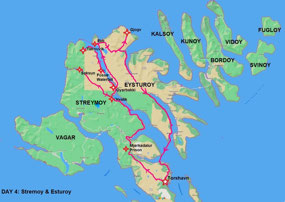
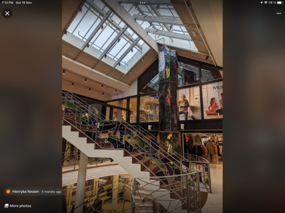
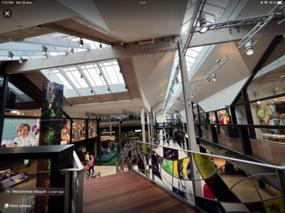
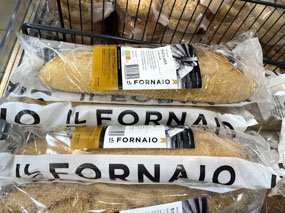
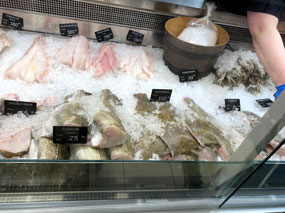
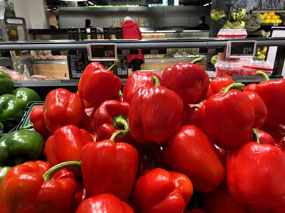
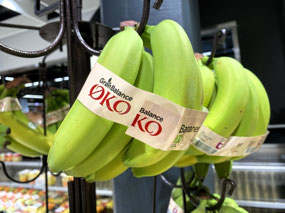
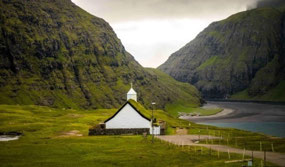
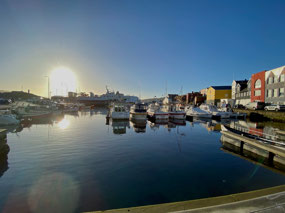
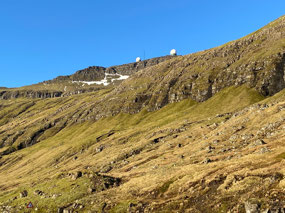
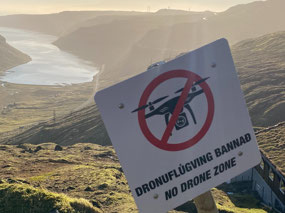
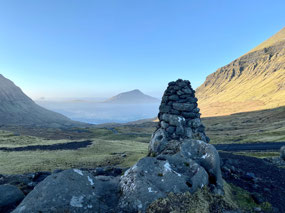
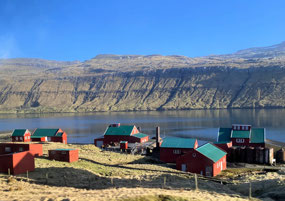
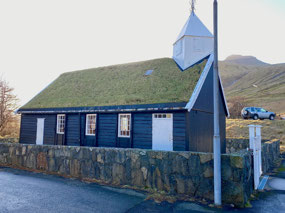
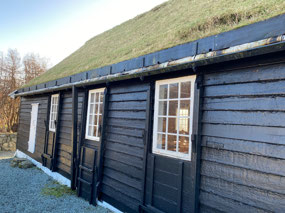

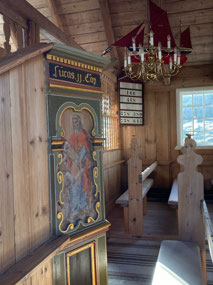
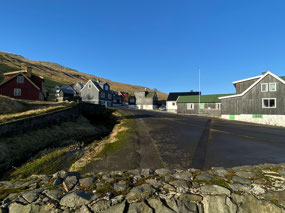
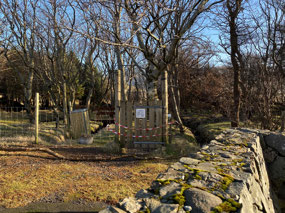
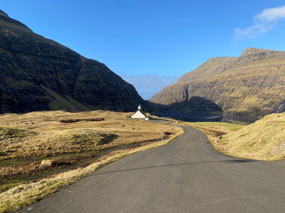
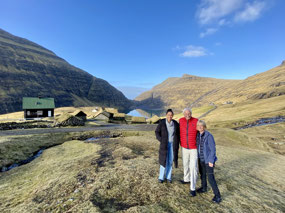
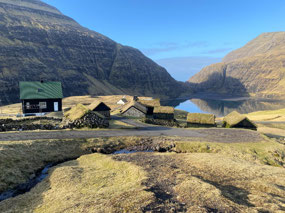
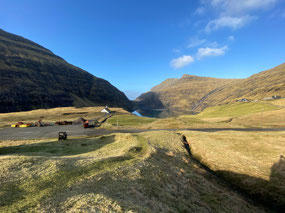
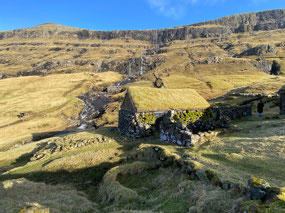
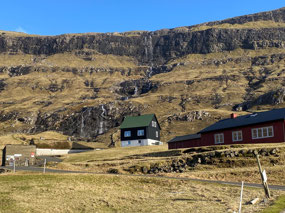
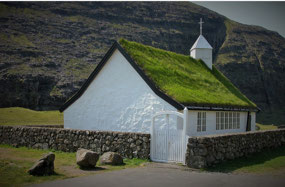

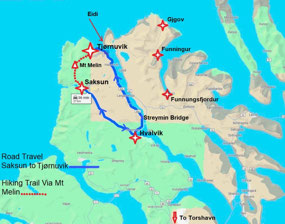
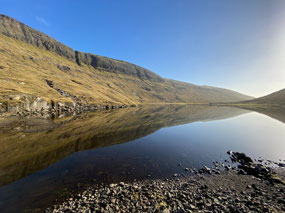
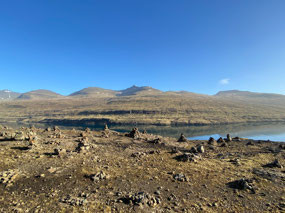
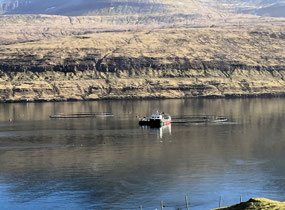
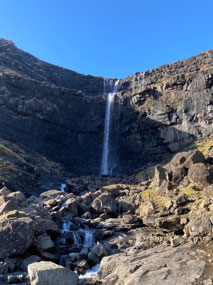
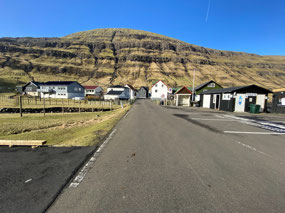
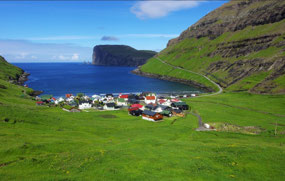
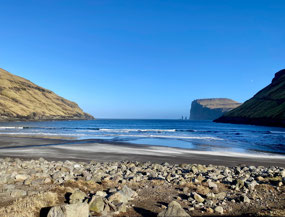
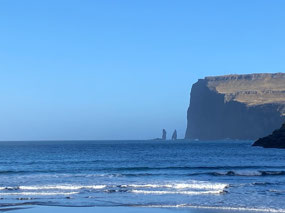
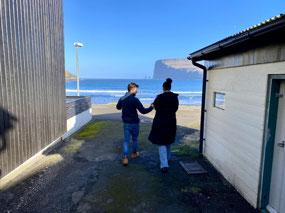

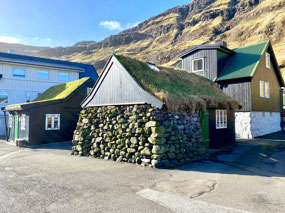
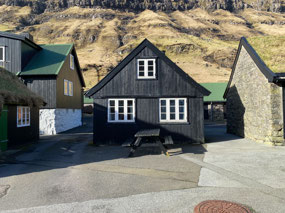
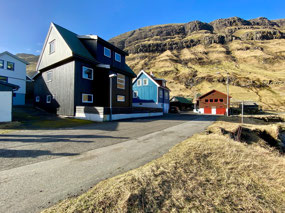
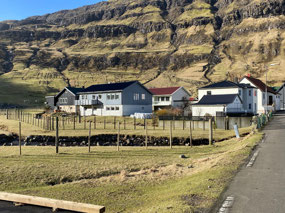
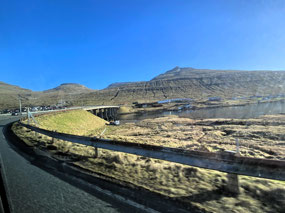

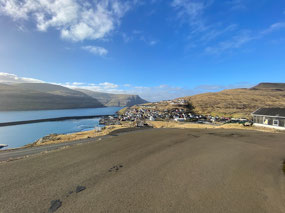
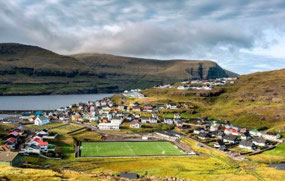
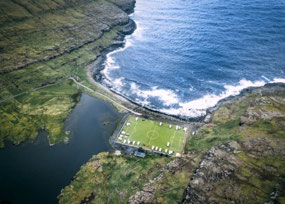
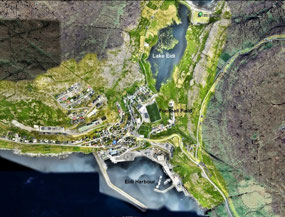
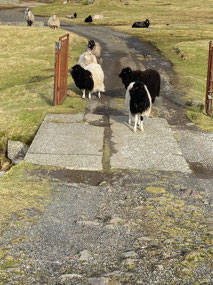
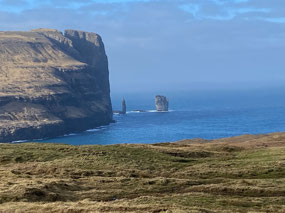
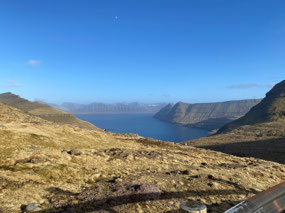
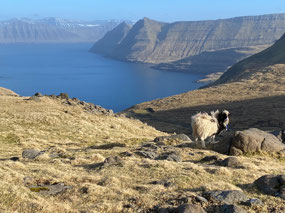
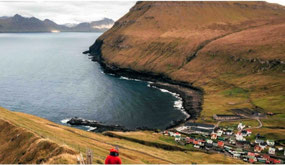

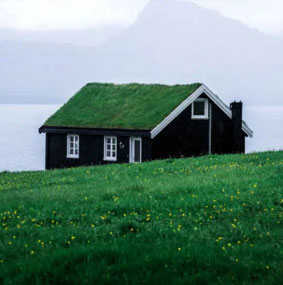
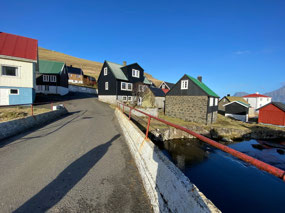
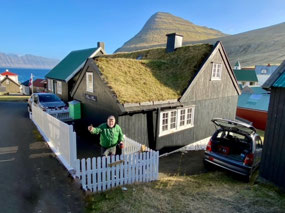
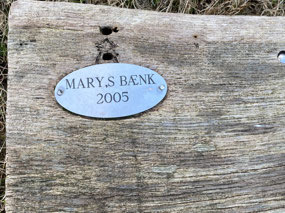
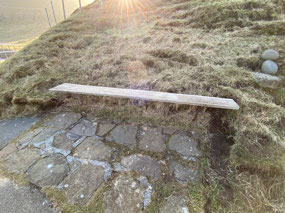
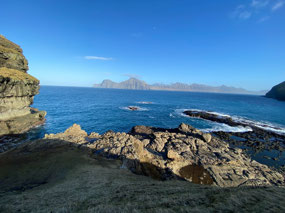
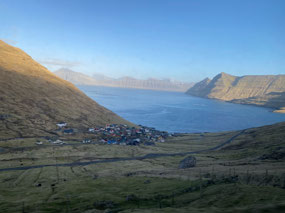








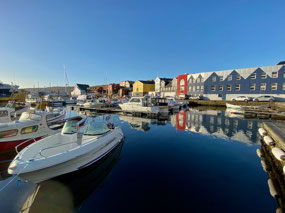
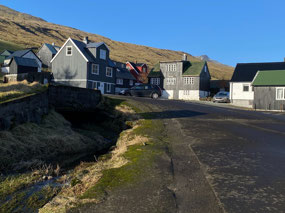
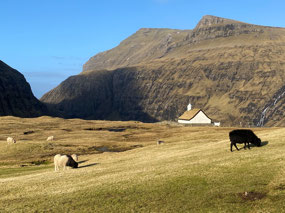
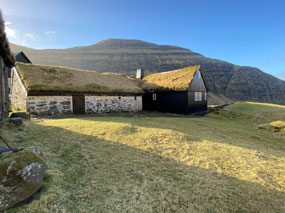
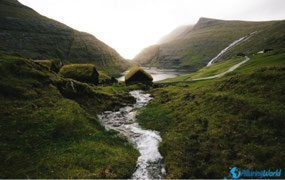
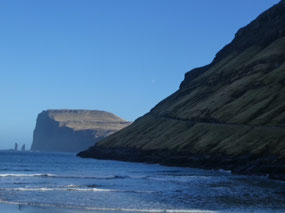
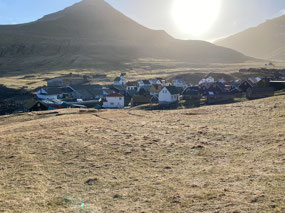
Margaret
2023-12-02
What a unique and beautiful place. Enjoying your wonderful descriptions and photos Wendy.
Vivienne
2023-12-09
What a treat to have first-hand information and pictures of this remote land.